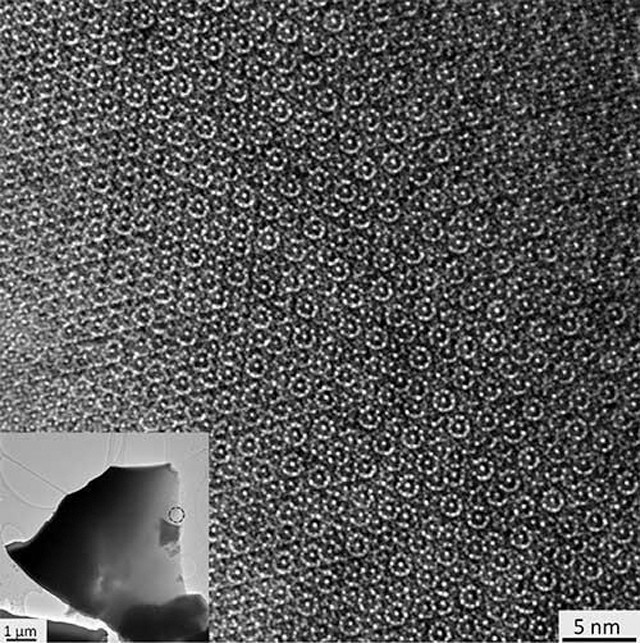
by Julia Rosen Thursday, July 16, 2015

High-resolution transmission electron microscopy reveals the structure of the new quasicrystal, which exhibits a 10-fold symmetric pattern Credit: Paul Steinhardt et al.
Scientists have found naturally occurring quasicrystals for the second time in a meteorite recovered from eastern Russia, according to a new study in Scientific Reports. Some of the researchers, including the lead author, Luca Bindi of the University of Florence in Italy, reported the discovery of the first natural quasicrystal, a mineral called icosahedrite, in the same meteorite in 2012. The researchers say that both quasicrystals probably formed under the high temperatures and pressures of a violent cosmic collision about 4.5 billion years ago, shortly after the formation of the solar system.
Scientists have been able to synthesize quasicrystals in the lab since 1982 (a discovery for which materials scientist Dan Shechtman won the Nobel Prize in chemistry), and they have developed many industrial applications, including as ingredients in nonstick coatings and LEDs. However, these irregular materials don’t appear in nature very often because their crystal structures exhibit so-called forbidden symmetries, like 5- and 10-fold symmetries, instead of the familiar 3-, 4- and 6-fold symmetries of most natural crystals.
Common symmetries can be arranged to form continuous, tightly packed configurations (think of square, triangular, or hexagonal bath tiles), but forbidden symmetries produce irregular, nonrepeating patterns, many of which aren’t stable under normal conditions. “The structure is saying ‘I am not a crystal, but on the other hand, I am not random either,'” said co-author Paul Steinhardt of Princeton University in a statement. Hence: quasicrystal.
Like most synthetic quasicrystals, both of the meteorite quasicrystals contain aluminum. The new sample, which has not been named yet, has 10-fold symmetry and an aluminum-nickel-iron makeup. It occurred in association with crystals of similar composition featuring more common symmetries, the authors noted.
© 2008-2021. All rights reserved. Any copying, redistribution or retransmission of any of the contents of this service without the expressed written permission of the American Geosciences Institute is expressly prohibited. Click here for all copyright requests.